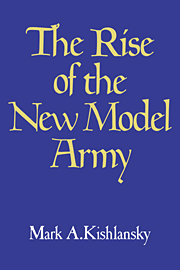Summary
The mobs' violence and the Army's march on London completed the transformation of the political process. With soldiers and citizens competing for the preservation of Parliament, political development reached a new level. Parliamentary authority had been superseded by force and the sanctity of the institution and its privileges debased. In victory, the institution whose power and prestige had reached its apex during the struggle with the King found itself bereft of all ability to rule the nation. The parliamentary way had succumbed to radical politics as the members of Parliament were bypassed by a host of new political participants. Although variously composed Parliaments would be a part of each new constitutional experiment, by 1647 political power had passed from the hands of the men at Westminster to those who held the sword.
It is traditional to explain the ascendancy of the New Model Army as a mere usurpation of power and to pass off the mobs' violence as mass hysteria accompanying the breakdown of institutional restraint. The origins of both is thought to be puritan extremism. The story narrated here has had a different emphasis. It suggests that the erosion of parliamentary legitimacy resulted from a change in parliamentary practice. The commonly held concept of a unified and organic political order had been violated by the rise of party and interest at Westminster, prompting forces outside Parliament to enter the political process and attempt its amelioration.
- Type
- Chapter
- Information
- The Rise of the New Model Army , pp. 273 - 291Publisher: Cambridge University PressPrint publication year: 1980



